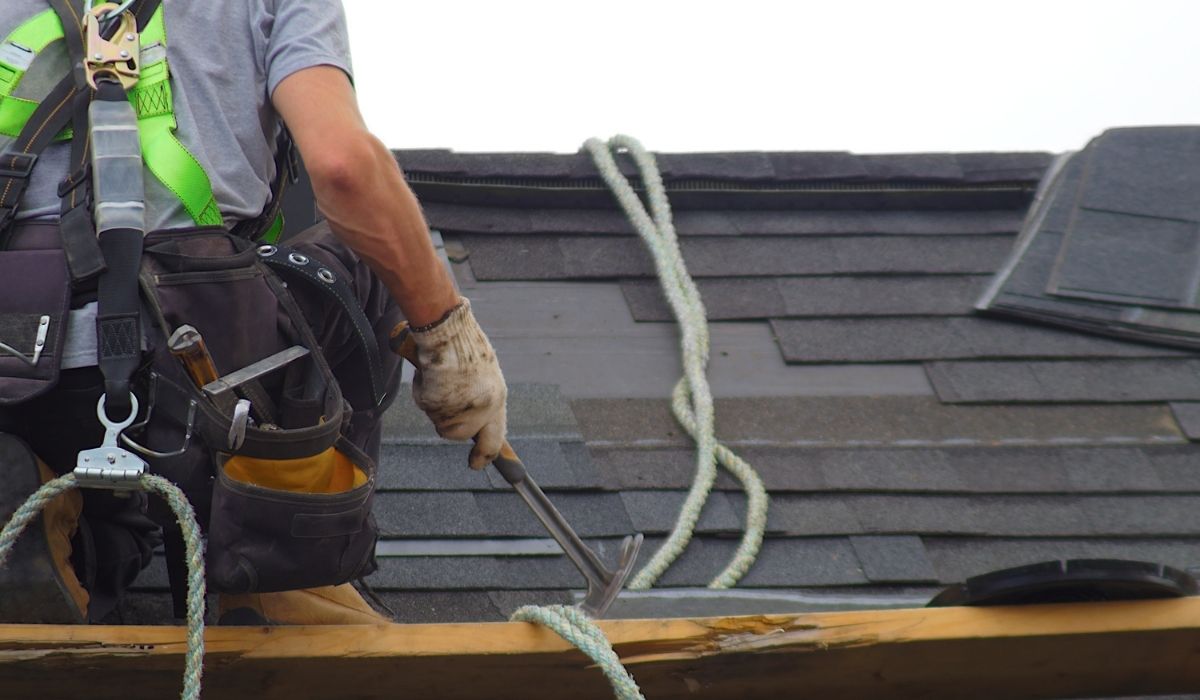What to Do When Your Roof Fails: Emergency Repair Tips Every Homeowner Should Know
Your roof is often the silent guardian of your home, tirelessly shielding you from the elements—be it harsh sun, driving rain, or gusty winds.
Yet, when an emergency occurs, such as a violent storm or a falling tree, the roof can quickly become a point of vulnerability.
In these moments, knowing how to respond effectively can help you minimize damage, protect your belongings, and avoid expensive repairs.
This guide walks you through the key warning signs of roof failure and provides essential tips on how to handle emergencies like a pro.
⚠️ Warning Signs That Call for Urgent Roof Repairs
Roof damage isn’t always obvious, and sometimes the signs are more subtle than you might expect.
Acting fast when you spot an issue can prevent further deterioration.
Here are some clear indicators that your roof may need immediate professional attention:
- Severe Weather Damage: High winds, hailstorms, or heavy rain can tear off shingles, dislodge flashing, and even cause branches or entire trees to fall onto your roof. These incidents often leave visible damage such as punctures, holes, or broken materials.
- Interior Leaks and Stains: If you notice water dripping indoors, discoloration on ceilings, bubbling paint, or peeling wallpaper, it’s a strong sign that your roof has been compromised and moisture is seeping into your home.
- Missing or Damaged Shingles: Shingles protect your home from water infiltration. When they’re missing, curled, or broken—often due to storms or aging—your roof becomes susceptible to leaks and water-related issues.
- Sagging or Uneven Roof Sections: A drooping or sagging area on your roof usually signals structural issues beneath the surface. This could be caused by waterlogged decking, rot, or weakened support beams—problems that need immediate attention to avoid collapse.
If you detect any of these problems, don’t wait. Taking swift action is critical to protect your home, and that’s where Eagle Watch Roofing can step in to help.
🛠️ 6 Emergency Roof Repair Tips for Homeowners
Facing sudden roof damage can feel overwhelming, especially if you’re unsure where to begin.
These practical tips will help you navigate a roofing crisis confidently and protect your property while you wait for professional help.
1. Stay Calm and Evaluate the Situation
- It’s natural to feel stressed in an emergency, but remaining calm helps you make safer and smarter decisions.
- Begin by assessing the visible damage from the ground or a safe vantage point. Look for missing shingles, exposed underlayment, debris, or structural sagging.
- Never climb onto the roof during severe weather or if there’s a risk of instability.
- If the damage appears severe or there are safety concerns, move your family members and valuables to a secure part of the house.
2. Take Photos and Document the Damage
- Use your smartphone or camera to take detailed pictures of the damage from various angles, including interior signs like leaks or ceiling cracks.
- This visual evidence is crucial when filing a roof insurance claim—it shows the full scope of the issue before any repairs begin.
- Keep written notes of any interactions with your insurer and roofing contractors, including dates, names, and discussions. This organized approach helps avoid misunderstandings and speeds up the claim process.
3. Use a Tarp to Cover the Damaged Area
- A waterproof tarp can serve as a temporary shield against rain and debris until repairs are made.
- Carefully secure the tarp over the affected area, ensuring full coverage. Use heavy objects like bricks, wooden planks, or nails to hold it in place.
- Do not attempt this in dangerous weather or without help. Prioritize safety above all else. If you’re unable to secure the tarp, call a professional emergency repair service to assist.
4. Resist the Urge to Make DIY Fixes
- While it might be tempting to fix a minor leak yourself, roofing repairs are best left to experienced professionals.
- Attempting repairs without proper tools or safety equipment can lead to injuries or cause further damage.
- Poorly executed DIY repairs may also void your roof’s warranty or create complications with your insurance claim.
- Focus on preventing further water entry, and wait for qualified contractors to perform permanent repairs.
5. Respond Without Delay
- Time is a major factor in roof damage control. Delaying action—even by a few days—can allow moisture to seep deeper into your home’s structure.
- Persistent leaks can lead to mold, electrical hazards, and even structural rot, all of which are expensive and hazardous to repair.
- Contact emergency roofing services as soon as possible and keep track of your claim process so that repairs begin swiftly.
6. Hire Qualified Roofing Experts
- A licensed and insured roofing contractor will have the experience and tools needed to safely and thoroughly repair your roof.
- They can assess both visible and hidden damage, make structural fixes, and ensure your roof complies with local building codes and warranty standards.
- Before hiring, research online reviews, ask for references, and verify credentials. Don’t rush into hiring someone without doing due diligence.
- Working with a reputable contractor not only ensures quality repairs but also protects you from scams or shoddy workmanship.
Why Hiring a Professional Roofer Is Essential

Although fixing a roof leak on your own might seem like a cost-effective solution, relying on a professional roofer like Eagle Watch Roofing is the safest and most reliable choice. Here’s why:
Expert Diagnosis
Professionals have the expertise to accurately assess the source of the leak.
They can uncover hidden problems that may be contributing to the issue and offer the most suitable repair strategies to prevent further damage.
Superior Craftsmanship
Experienced roofers use top-grade materials and proven techniques to deliver lasting repairs.
DIY attempts using substandard tools or methods can lead to additional problems and compromise the structural integrity of your roof.
Warranty Coverage
Most reputable roofing companies provide warranties for their work, giving you peace of mind.
This protection ensures that any issues arising after the repair can be addressed at no extra cost.
Time and Money Efficiency
While hiring a professional may involve an upfront cost, it often saves you both time and money over time.
Efficient repairs help prevent more serious damage and expensive future repairs.
In urgent situations, having a skilled roofer respond quickly can greatly reduce the extent of the damage and help protect your home.
Final Thoughts
Roofing emergencies are never convenient, but knowing how to respond effectively can make a big difference in limiting damage and easing the repair process.
By recognizing warning signs early, documenting everything, using temporary fixes like tarping, and involving trusted professionals like Eagle Watch Roofing, you can keep your home protected and minimize stress.
When every second counts, choosing a reliable partner for your roof repair needs ensures you’re not alone in the crisis.
FAQ’s
It just rained, and now my ceiling is leaking—what do I do first?
Stay calm and move your belongings, electronics, and furniture away from the leak. Use buckets or towels to catch dripping water and avoid any ceiling areas that look swollen or cracked. Photograph everything—the leak, the ceiling, and any damage below. Then, call a roofing professional immediately to prevent the issue from spreading or becoming more costly.
Do I really need to cover my roof with a tarp, or can it wait until tomorrow?
Yes, tarping is important—even if the weather looks clear for now. A small opening can let in moisture or pests, and it only takes one unexpected shower to cause serious interior damage. If it’s safe, cover the area with a waterproof tarp and secure it well. If you’re unsure or uncomfortable doing it yourself, call an emergency roofer to install it properly and safely.
Is it okay to try patching a small hole myself?
It might be tempting, but patching a roof without the right tools and know-how can be dangerous and may even make the damage worse. Roofs are slippery, high, and potentially unstable after storms. Plus, DIY fixes could void your insurance or roof warranty. Instead, contain the issue with buckets or tarps and leave the actual repairs to a licensed professional.
How do I know if roof damage is serious enough to call someone?
If you see missing shingles, drooping spots, or ceiling stains, those are clear red flags that shouldn’t be ignored. What looks minor on the outside can hide deeper structural issues beneath. Even if you’re unsure, a quick inspection by a professional can give peace of mind—or catch problems before they turn into major repairs.
What kind of photos should I take for my insurance?
Take wide shots to show the full roof and damage in context, then close-ups of missing shingles, punctures, or debris. Don’t forget to photograph inside your home if there are leaks or stains. Include timestamps if possible, and keep notes on everything—who you spoke to, when, and what was discussed. This helps streamline your claim and prevents confusion later.
Can I wait a few days to call for repairs if it’s not leaking badly?
Delaying even a day or two can lead to serious consequences. Water can soak insulation, damage ceilings, and invite mold growth, even from a slow or intermittent leak. Some insurance policies also require quick action to limit damage. It’s best to act fast—call for an inspection or emergency patch job, even if it seems manageable.
How do I avoid hiring a shady contractor in a rush?
Start by checking reviews, licenses, and proof of insurance. Ask for references, and don’t be afraid to compare quotes before hiring. Be cautious of anyone who demands full payment up front. Look for companies with a local presence, not just storm-chasers who show up after bad weather. A few minutes of vetting now can save you from poor workmanship or potential scams.

